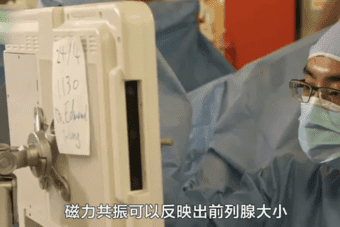Prostate cancer is the fourth most commonly diagnosed cancer in Hong Kong. 2,315 cases were recorded in 2020, of which 32.3% were categorized as early-stage, i.e., stages 1 and 2. Patients with early-stage prostate cancer (where the cancer has not yet spread beyond the prostate), may consider minimally invasive, robot-assisted surgery, which facilitates precise removal of the tumor. Compared with traditional open surgery, robotic surgery lowers the risk of incontinence and sexual dysfunction, thereby alleviating some of the main concerns of patients.
Traditional treatment generally involves open surgery or endoscopic treatment, with procedures spanning six to eight hours. The wound itself may be as wide as 10 inches, meaning patients are required to recover in the hospital for one to two weeks. In addition to the risk of incontinence, some patients may also suffer erectile dysfunction as the surgery involves removal of the prostate and surrounding nerves. However, with the introduction of robot-assisted surgery in recent years, surgical precision has improved dramatically, reducing the risk of excessive bleeding and other postoperative complications.
The new-generation da Vinci Xi system boasts increased flexibility and precision that mimic the movement of an actual human wrist. During surgery, all four robotic arms may be equipped with cameras, which provide multi-angle views, while 3D capabilities magnify images tenfold to deliver a clear view of nerves and muscles within the pelvic cavity. Meanwhile, fluorescence imaging technology identifies the location and size of the tumor in real time. In addition, surgical precision of the robotic instruments facilitates maximum preservation of healthy tissue, especially the muscles and tissues that maintain continence, reducing the risk of postoperative incontinence.
During robotic prostatectomy, five small incisions of approximately one centimeter each are made in the abdomen, thereby significantly reducing the amount of blood lost compared to open surgery. Patients are able to recover much quicker, being discharged from the hospital as soon as four days after surgery. In terms of postoperative complications, patients undergoing traditional surgery have a 30% chance of suffering from permanent incontinence, while those undergoing robotic surgery only have a 3% risk. Furthermore, robotic surgery is able to help preserve the nerves responsible for penile erection, maintaining sexual function for patients. With regards to recurrence of prostate cancer, patients who undergo robotic surgery during the early stages of cancer have a recurrence rate of less than 5% within five years.
Traditionally, prostate cancer occurs mainly in patients between the ages of 60 and 70. However, the disease has increasingly been diagnosed in men at younger ages, with some being diagnosed at 55 and a small proportion discovering the disease before the age of 50. For younger patients who may still be sexually active, surgical methods that do not compromise sexual function are an important consideration as they facilitate a return to normal life as much as possible.
There are numerous treatment methods for prostate cancer, each with varying levels of effectiveness and side effects. Patients with questions should consult their physician for more information.























